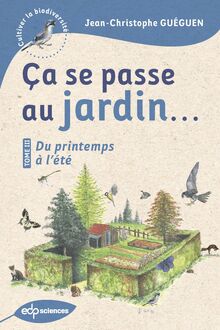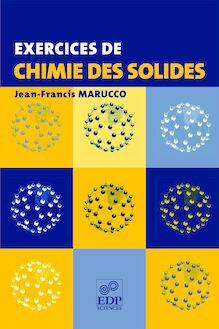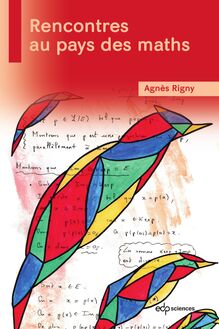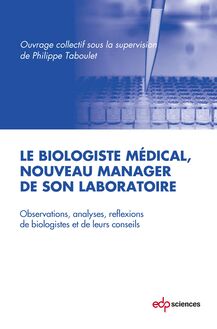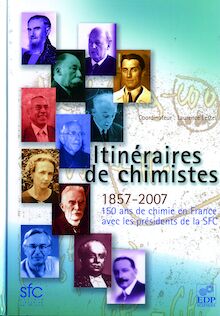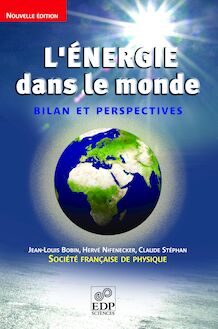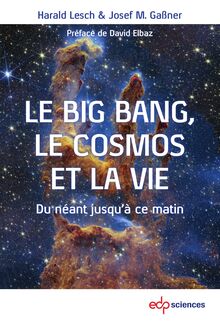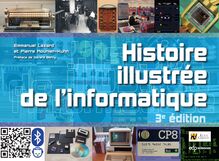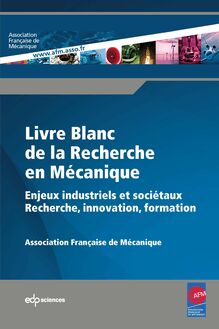-
 Univers
Univers
-
 Ebooks
Ebooks
-
 Livres audio
Livres audio
-
 Presse
Presse
-
 Podcasts
Podcasts
-
 BD
BD
-
 Documents
Documents
-
- Cours
- Révisions
- Ressources pédagogiques
- Sciences de l’éducation
- Manuels scolaires
- Langues
- Travaux de classe
- Annales de BEP
- Etudes supérieures
- Maternelle et primaire
- Fiches de lecture
- Orientation scolaire
- Méthodologie
- Corrigés de devoir
- Annales d’examens et concours
- Annales du bac
- Annales du brevet
- Rapports de stage
La lecture à portée de main
Découvre YouScribe en t'inscrivant gratuitement
Je m'inscrisDécouvre YouScribe en t'inscrivant gratuitement
Je m'inscrisEn savoir plus
En savoir plus

Description
Some of the more striking results obtained or anticipated on the ground or in space at radio, infrared and visible wavelengths and in X-, gamma-ray and cosmic-rays are covered. The roles of the European Southern Observatory (ESO) and the European Space Agency (ESA) are stressed, but national initiatives are also touched upon. Input into the research system in the form of financing and personnel and output as publications are evaluated. The time frame covered extends from around 1980 till about 2020. While this book centers on European developments, comparisons with what others are doing are included.
After the war Europe in science had fallen far behind the US. Thanks to European cooperation equality has again been reached. Through ESO's Very Large Telescope and ESA's missions, like the Infrared Space Observatory, X- and gamma- ray satellites, Mars Express and others, Europe is fully and independently present at the forefront. The need to integrate the scientists and engineers from the new EU countries into the overall organization of European science is noted, an integration which ultimately could extend even further eastward. This book addresses a wide audience: astronomers and space scientists, students, politicians involved in science funding, amateur astronomers and the educated public with an interest in the science and technology achievable by European cooperation.
Sujets
Informations
| Publié par | EDP Sciences |
| Date de parution | 01 janvier 2006 |
| Nombre de lectures | 0 |
| EAN13 | 9782759801671 |
| Langue | English |
| Poids de l'ouvrage | 2 Mo |
Informations légales : prix de location à la page 0,4400€. Cette information est donnée uniquement à titre indicatif conformément à la législation en vigueur.
Extrait
Europe's Quest
for the Universe
Lodewijk WoltjerEurope’s Quest
for the Universe
ESO and the VLT, ESA and other projects
Lodewijk Woltjer
EDP Sciences
17, avenue du Hoggar
Parc d’activités de Courtabœuf, BP 112
91144 Les Ulis Cedex A, FranceCover: THE VLT Array on the Paranal Mountain. © ESO.
ISBN : 2-86883-813-8
Tous droits de traduction, d’adaptation et de reproduction par tous procédés, réservés
pour tous pays. La loi du 11 mars 1957 n’autorisant, aux termes des alinéas 2 et 3 de
l’article 41, d’une part, que les « copies ou reproductions strictement réservées à l’usage
privé du copiste et non destinées à une utilisation collective », et d’autre part, que les
analyses et les courtes citations dans un but d’exemple et d’illustration, « toute
représentation intégrale, ou partielle, faite sans le consentement de l’auteur ou de ses
erayants droit ou ayants cause est illicite » (alinéa 1 de l’article 40). Cette représentation
ou reproduction, par quelque procédé que ce soit, constituerait donc une contrefaçon
sanctionnée par les articles 425 et suivants du code pénal.
© EDP Sciences 2006CONTENTS
Preface.................................................................................. 3
Préface 4
Acknowledgements.............................................................. 5
Introduction ........................................................................ 7
I. The Development of European Astronomy during
ththe 20 Century .................................................................. 11
II. ESO, La Silla, the 3.6-m Telescope, Other Telescope Projects
in Europe ............................................................................ 25
III. Origin of the ESO VLT Project; The NTT ........................ 43
IV. Technological, Financial and Scientific Planning
of the VLT 59
V. Construction of the VLT .................................................... 69
VI. Sites for Telescopes ............................................................ 87
VII. The VLT Observatory: Adaptive Optics, Instruments,
Interferometry and Survey Telescopes .............................. 109
VIII. Ground and Space Based Optical Telescopes.................... 123
IX. Radio Astronomy; ALMA and SKA.................................... 139
X. Europe in Space: ESA’s Horizons 2000 .......................... 161
XI. European Space Missions: IR, X- and Gamma Rays ...... 175
XII. European Space Missions: The Solar System .................. 203
XIII. European Space Missions: The Sun and the Heliosphere .. 219
XIV. Astroparticles and Gravitational Waves ............................ 231
XV. Looking for Planets and Life in the Universe .................. 243
XVI. Publications ........................................................................ 253
XVII. European Astronomy: Researchers and Funding ............ 265
XVIII. The Future .......................................................................... 277
XIX. Epilogue .............................................................................. 289
Notes .................................................................................... 291
Acronyms ............................................................................ 301
Index 317
Photo credits........................................................................ 325Preface
What a magnificent title, “Europe’s quest for the Universe”, for the
opening of this new book by Professor Woltjer, which presents and expands
on two grand themes.
Since the days of Copernicus, Galileo, Tycho Brahe and Kepler, as a
research community Europe has been at the cutting edge of science, in its
incessant quest to understand the universe we live in.
In this book we trace the history and development of more recent
institutions such as the ESA and ESO. This is thanks to the great skill and
experience of the author who, by writing this work, passes on the fruits of
a unique and exceptional career.
Great pride and optimism for European science comes across on
reading these pages, all beautifully illustrated. Written to a high scientific
level, this book provides the reader with a top quality reference on the
subjects covered, and gives us ample reason to believe in a European research
environment directed firmly to the future.
The second theme is that knowledge and exploration of the universe
are fundamental elements of the human psyche, a drive inherent in all of
us to understand and discover our destiny.
The Universe is a magnificent question which inspires scientific and
technological development. At the same time it remains that star studded
sky which acts as a source of wonderment and inspiration for our thoughts
and dreams.
Thank you Professor Woltjer for returning us, through this book, to
the very roots of our humanity, and revealing to us such marvellous
advances in understanding.
Philippe BUSQUIN, July 2005
European member of parliament,
Former European commissioner for ResearchPréface
Quel magnifique titre pour l’ouvrage de Monsieur Woltjer “Europe’s
Quest for the Universe” qui exprime deux idées fortes et l’évolution de celles-ci.
L’Europe, comme espace commun de recherche, depuis Copernic,
Galilée, Tycho Brahe, Kepler, a été à la pointe de la science et de cette quête
incessante de compréhension de notre Univers.
L’histoire et le développement des institutions plus récentes comme
l’ESA et l’ESO sont retracés grâce à l’expérience et à la compétence de
l’auteur qui, par le truchement de cet ouvrage, nous transmet les fruits d’une
carrière unique et exceptionnelle.
Quelle fierté et quel optimisme pour le savoir européen à la lecture
de ces pages si bien illustrées et d’un haut niveau scientifique qui
contribueront à nous donner une référence de très haute qualité sur les sujets
abordés et nous fournissent toutes les raisons de croire en un espace
européen de la recherche tourné vers l’avenir.
La deuxième idée est que la connaissance et la conquête de l’Univers
sont des éléments fondamentaux du besoin inhérent à l’homme de
comprendre et de découvrir le sens de son destin.
L’Univers demeure cette magnifique interrogation qui inspire le
développement scientifique et technologique mais aussi le ciel étoilé propice
aux rêves, aux réflexions et à l’émerveillement.
Merci, Monsieur Woltjer, de nous replonger, grâce à votre ouvrage,
aux racines de l’humanité et aux merveilleuses avancées de la
connaissance.
Philippe BUSQUIN, juillet 2005
Membre du Parlement Européen,
Ancien Commissaire Européen à la RechercheAcknowledgements
First of all I would like to thank Ulla Demierre Woltjer without whose
active participation this book would not have come about. Jean Pierre Swings
and James Lequeux read the whole book, Roger Bonnet, Daniel Hofstadt,
Marc Sarazin and Giancarlo Setti some chapters and provided much
information. Many persons supplied data or contributed in less formal discussions.
I mention here Arne Ardeberg, Adriaan Blaauw, Roy Booth, Jacques
Breysacher, Harvey Butcher, Giacomo Cavallo, Roger Cayrel, Thierry
Courvoisier, Rodney Davies, Margo Dekker-Woltjer, Michel Dennefeld,
Franca Drago, Hilmar Duerbeck, Daniel Enard, Peter Fischer, Robert
Fosbury, Reinhard Genzel, Roberto Gilmozzi, Alvaro Gímenez, Michael
Grewing, Einar Gudmundsson, Martin Harwit, Günther Hasinger, Martin
Huber, Henning Jørgensen, Martin Kessler, Pierre Léna, Duccio Macchetto,
Kalevi Mattila, Brian McBreen, Jorge Melnick, Evert Meurs, George Miley,
Alan Moorwood, Antonella Natta, José Miguel Rodriguez Espinosa, Francisco
Sánchez, Aage Sandquist, Richard Schilizzi, Hans-Emil Schuster, John
Seiradakis, Peter Shaver, Boris Shustov, Jason Spyromilio, G. Srinivasan, Jean
Surdej, Yasuo Tanaka, Virginia Trimble, Sergio Volonté, Malcolm Walmsley,
Roland Walter, Robert Williams, Ray Wilson. Edmund Janssen, who drew
the map in Figure VI, 3, Hans-Hermann Heyer and Claus Madsen searched
the ESO archives for photographs. To all my thanks.
I wish to thank Catherine Césarsky, Director General of ESO, and
David Southwood, Director of the ESA Science Programme, for having
contributed towards making the publication of this book possible, and EDP Sciences
for taking the risk to publish it in color.
Parts of this book were written while “chercheur associé” at the
Observatoire de Haute Provence; I thank the directors Philippe Véron, Antoine
Labeyrie, Jean-Pierre Sivan and Michel Boër, as well as Mira Véron-Cetty,
for their support. Other parts were written while “Rossi Fellow” at the
Osservatorio Astrofisico di Arcetri, and I thank the directors Franco Pacini and
Marco Salvati, as well as the chairman of the Astronomy Department Claudio
Chiuderi for their support. Some sections were written during visits to
the Raman Research Institute in Bangalore, and I thank the directors
V. Radhakrishnan and N. Kumar for the friendly reception I received there.Introduction
The progress of science depends on the technological development of
its instrumentation. This is particularly true for the astronomical sciences
where the study of remote objects requires sophisticated and costly
detection techniques. In this book I shall analyze some of the large European
astronomical projects, both on the ground and in space, their development during
the last two decades, and their prospects in the future. While scientific
progress is intimately related to technology development, both are
contingent on professionals and funding, and I shall consider the situation with
regard to both of these.
This book is addressed to a varied audience: scientists who wish to see
what is happening outside their own domain, students who look for fruitful
areas of thesis research, functionaries who need some background for
decision making, amateur astronomers interested in knowing what is going on
in the profession, and also to an educated public that wants to get the flavor
of what is behind the newspaper articles reporting scientific results and to
know how European activities compare to what is being done elsewhere.
-
 Univers
Univers
-
 Ebooks
Ebooks
-
 Livres audio
Livres audio
-
 Presse
Presse
-
 Podcasts
Podcasts
-
 BD
BD
-
 Documents
Documents
-
Jeunesse
-
Littérature
-
Ressources professionnelles
-
Santé et bien-être
-
Savoirs
-
Education
-
Loisirs et hobbies
-
Art, musique et cinéma
-
Actualité et débat de société
-
Jeunesse
-
Littérature
-
Ressources professionnelles
-
Santé et bien-être
-
Savoirs
-
Education
-
Loisirs et hobbies
-
Art, musique et cinéma
-
Actualité et débat de société
-
Actualités
-
Lifestyle
-
Presse jeunesse
-
Presse professionnelle
-
Pratique
-
Presse sportive
-
Presse internationale
-
Culture & Médias
-
Action et Aventures
-
Science-fiction et Fantasy
-
Société
-
Jeunesse
-
Littérature
-
Ressources professionnelles
-
Santé et bien-être
-
Savoirs
-
Education
-
Loisirs et hobbies
-
Art, musique et cinéma
-
Actualité et débat de société
- Cours
- Révisions
- Ressources pédagogiques
- Sciences de l’éducation
- Manuels scolaires
- Langues
- Travaux de classe
- Annales de BEP
- Etudes supérieures
- Maternelle et primaire
- Fiches de lecture
- Orientation scolaire
- Méthodologie
- Corrigés de devoir
- Annales d’examens et concours
- Annales du bac
- Annales du brevet
- Rapports de stage
